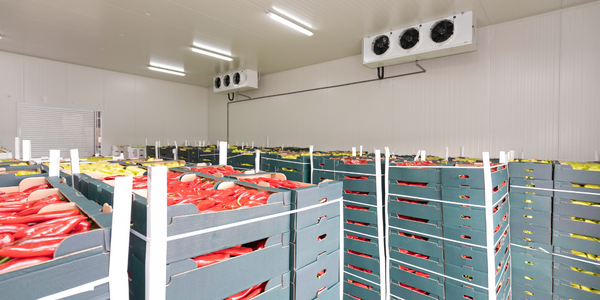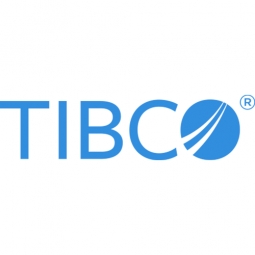公司规模
Large Corporate
地区
- Europe
国家
- Sweden
产品
- TIBCO Enterprise Message Service™
- ActiveMatrix BusinessWorks™
- TIBCO® Managed File Transfer
技术栈
- Enterprise Service Bus
- Service-Oriented Architecture
- Real-Time Messaging
实施规模
- Enterprise-wide Deployment
影响指标
- Customer Satisfaction
- Digital Expertise
- Productivity Improvements
技术
- 应用基础设施与中间件 - 数据交换与集成
- 应用基础设施与中间件 - 中间件、SDK 和库
- 平台即服务 (PaaS) - 连接平台
适用行业
- 运输
适用功能
- 商业运营
- 物流运输
用例
- 车队管理
- 预测性维护
- 实时定位系统 (RTLS)
服务
- 软件设计与工程服务
- 系统集成
关于客户
SAS is Scandinavia’s leading airline. Its vision is to make life easier for Scandinavia´s frequent travelers. With SAS you become part of a community experiencing easy, joyful, and reliable services, delivered the Scandinavian way. Its strategic priorities are to keep up with trends and industry developments, ensure competitiveness, and provide the prerequisites for long-term sustainable profitability.
挑战
As Katarina Khan, head of enterprise architecture, explains, “Over the last 20 years, the airline industry has evolved from a system of long-established, state-owned carriers to a dynamic free-market industry. There are a lot of low-cost airlines now, and for passengers, it’s become very much about a digital experience—self-service apps for booking, re-booking, and flight updates. “Back in 2001, our challenge was to move away from old point-to-point integrations and become more loosely coupled—to reuse integrations and have a very reliable, secure, high-performing infrastructure. We wanted to give the business a shorter time to market and make it easy to integrate with partners and communicate with our customers in a modern way. If we didn’t modernize, it would have been very difficult to deploy new solutions to meet customer demand.”
解决方案
Continues Ms. Khan, “In 2001—this was before my time—we did an evaluation, and the choice obviously was TIBCO. I think our goal from the beginning didn’t change that much, we just decided to implement in phases, and started with TIBCO’s enterprise service bus. In the second phase, around 2006, we implemented a new co-management system, which required a lot of integrations and TIBCO Enterprise Message Service™. We wanted a more service-oriented architecture so that every time a flight takes off, a message would be sent to backend systems. The next major phase was around 2010 when we decommissioned our old homegrown system for modern ticketing, reservation, inventory-management, and departure-control systems. At that time, we did a new evaluation because we had a lot of Microsoft technology, so we actually compared TIBCO with Microsoft and decided to keep and expand TIBCO. After that, we invested more in our integration platform using ActiveMatrix BusinessWorks™ and TIBCO® Managed File Transfer, which was a good way to control our batch FTP and SFTP jobs. TIBCO had a very important role as a data hub to create these integrations from one system to all our backend systems. At the end of this program, we also established our integration competency center, the ICC.
运营影响
数量效益

Case Study missing?
Start adding your own!
Register with your work email and create a new case study profile for your business.
相关案例.

Case Study
Airport SCADA Systems Improve Service Levels
Modern airports are one of the busiest environments on Earth and rely on process automation equipment to ensure service operators achieve their KPIs. Increasingly airport SCADA systems are being used to control all aspects of the operation and associated facilities. This is because unplanned system downtime can cost dearly, both in terms of reduced revenues and the associated loss of customer satisfaction due to inevitable travel inconvenience and disruption.

Case Study
IoT-based Fleet Intelligence Innovation
Speed to market is precious for DRVR, a rapidly growing start-up company. With a business model dependent on reliable mobile data, managers were spending their lives trying to negotiate data roaming deals with mobile network operators in different countries. And, even then, service quality was a constant concern.

Case Study
Digitize Railway with Deutsche Bahn
To reduce maintenance costs and delay-causing failures for Deutsche Bahn. They need manual measurements by a position measurement system based on custom-made MEMS sensor clusters, which allow autonomous and continuous monitoring with wireless data transmission and long battery. They were looking for data pre-processing solution in the sensor and machine learning algorithms in the cloud so as to detect critical wear.

Case Study
Cold Chain Transportation and Refrigerated Fleet Management System
1) Create a digital connected transportation solution to retrofit cold chain trailers with real-time tracking and controls. 2) Prevent multi-million dollar losses due to theft or spoilage. 3) Deliver a digital chain-of-custody solution for door to door load monitoring and security. 4) Provide a trusted multi-fleet solution in a single application with granular data and access controls.

Case Study
Vehicle Fleet Analytics
Organizations frequently implement a maintenance strategy for their fleets of vehicles using a combination of time and usage based maintenance schedules. While effective as a whole, time and usage based schedules do not take into account driving patterns, environmental factors, and sensors currently deployed within the vehicle measuring crank voltage, ignition voltage, and acceleration, all of which have a significant influence on the overall health of the vehicle.In a typical fleet, a large percentage of road calls are related to electrical failure, with battery failure being a common cause. Battery failures result in unmet service agreement levels and costly re-adjustment of scheduled to provide replacement vehicles. To reduce the impact of unplanned maintenance, the transportation logistics company was interested in a trial of C3 Vehicle Fleet Analytics.

Case Study
3M Gains Real-Time Insight with Cloud Solution
The company has a long track record of innovative technology solutions. For example, 3M helps its customers optimize parking operations by automating fee collection and other processes. To improve support for this rapidly expanding segment, 3M needed to automate its own data collection and reporting. The company had recently purchased the assets of parking, tolling, and automatic license plate reader businesses, and required better insight into these acquisitions. Chad Reed, Global Business Manager for 3M Parking Systems, says, “With thousands of installations across the world, we couldn’t keep track of our software and hardware deployments, which made it difficult to understand our market penetration.” 3M wanted a tracking application that sales staff could use to get real-time information about the type and location of 3M products in parking lots and garages. So that it could be used on-site with potential customers, the solution would have to provide access to data anytime, anywhere, and from an array of mobile devices. Jason Fox, Mobile Application Architect at 3M, upped the ante by volunteering to deliver the new app in one weekend. For Fox and his team, these requirements meant turning to the cloud instead of an on-premises datacenter. “My first thought was to go directly to the cloud because we needed to provide access not only to our salespeople, but to resellers who didn’t have access to our internal network,” says Fox. “The cloud just seemed like a logical choice.”



